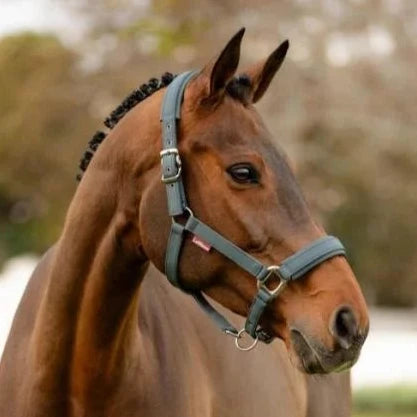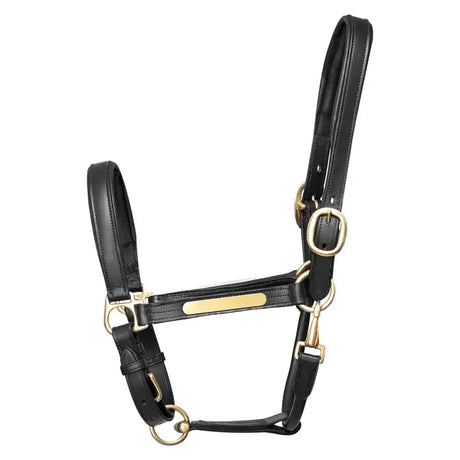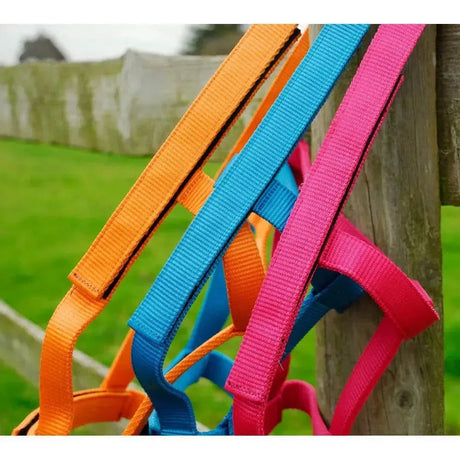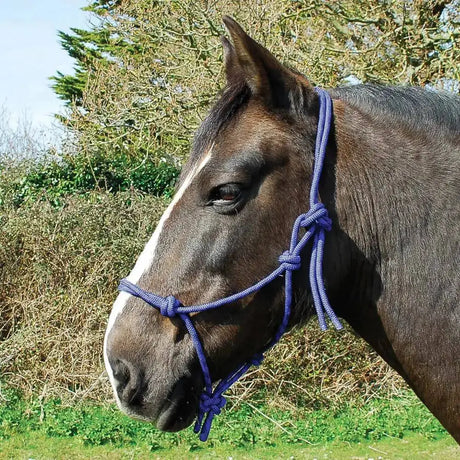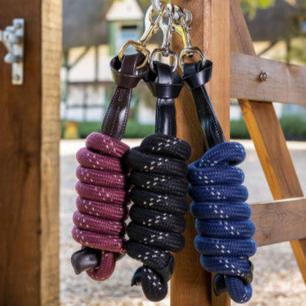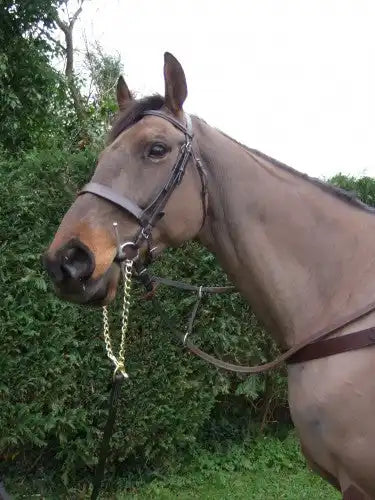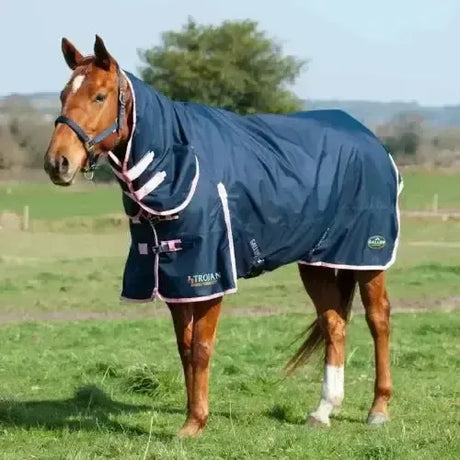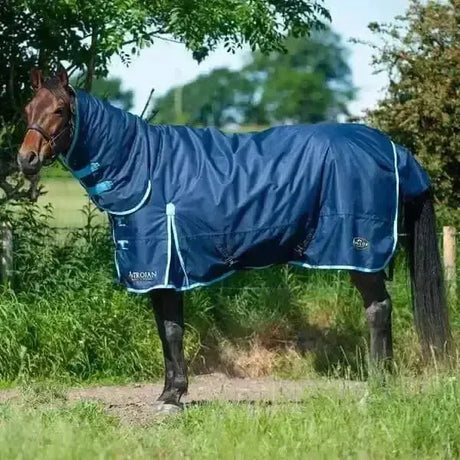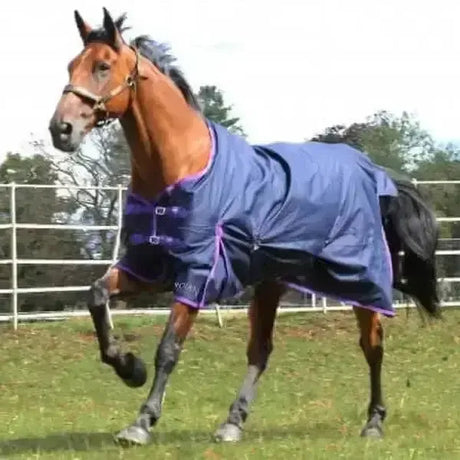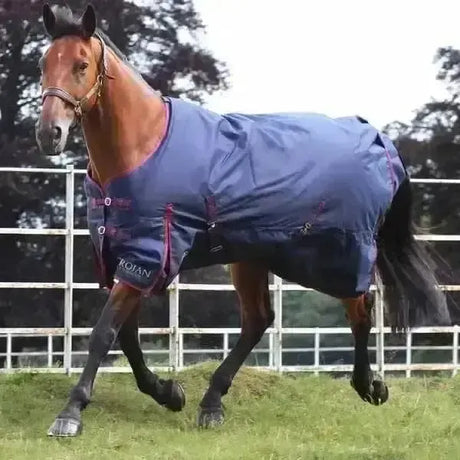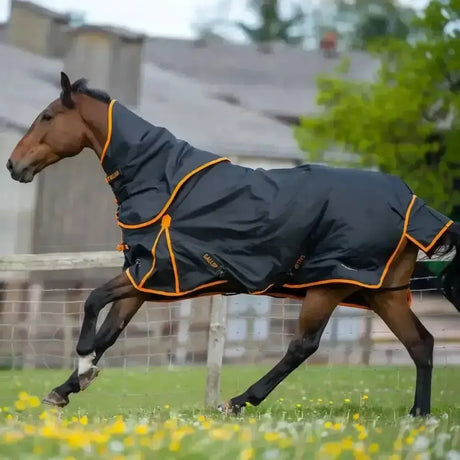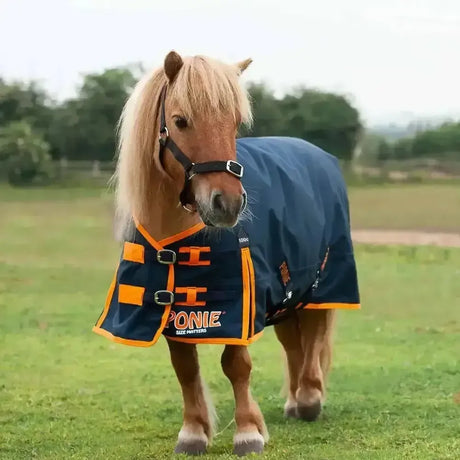Headcollars
Headcollars (also known as halters) are essential pieces of tack used to handle, lead, tie, and sometimes control horses. They are designed to be comfortable for the horse while providing the handler with control. Headcollars come in a variety of materials, designs, and styles to suit different purposes, from everyday use to shows, transport, or turnout.
Key Features of Headcollars
-
Material:
-
Nylon: Strong, lightweight, and affordable. Nylon headcollars are available in many colors and patterns, making them popular for daily use. They are also durable and easy to clean.
-
Leather: Stylish, durable, and often used for formal occasions such as showing. Leather headcollars improve with age and proper care, becoming softer and more supple over time.
-
Synthetic: Usually made from polypropylene or other strong materials. These are often weather-resistant and easy to maintain, making them great for turnout or wet conditions.
-
Rope: Rope halters are often used in training due to their ability to apply more precise pressure. They are lightweight and typically used for groundwork and natural horsemanship.
-
Design:
-
Adjustable Fit: Many headcollars have adjustable buckles at the noseband, crownpiece, and chin to ensure a comfortable, customized fit.
-
Padded: Some headcollars include padding on the noseband, crownpiece, or cheekpieces for extra comfort, especially for sensitive-skinned horses.
-
Breakaway: Designed with a breakable section (often a leather piece or a breakaway clip), these headcollars are safer in situations where a horse could get caught, as they release under pressure.
-
Hardware:
-
Brass: Durable and rust-resistant, brass hardware adds a classic, polished look to the headcollar.
-
Stainless Steel: Known for its strength and corrosion resistance, stainless steel hardware is ideal for heavy-duty use and exposure to the elements.
-
Quick-Release Clips: These clips allow for easy on-and-off application of the headcollar, especially useful in emergency situations.
Types of Headcollars
-
Nylon Headcollars:
-
Material: Made from strong, weather-resistant nylon, available in various colors and designs.
-
Use: Ideal for everyday use, turnout, and handling around the stable.
-
Benefits: Durable, easy to clean, and affordable. Some nylon headcollars also come with reflective strips for increased visibility.
-
Leather Headcollars:
-
Material: High-quality leather, often with brass or stainless steel fittings.
-
Use: Commonly used for showing, transport, or special occasions where appearance matters.
-
Benefits: Leather headcollars offer a classic, elegant look and are durable with proper care. They become softer and more comfortable with time.
-
Padded Headcollars:
-
Design: Features extra padding on key pressure points, such as the noseband and crownpiece.
-
Use: Ideal for horses with sensitive skin or for long periods of wear, such as during transport.
-
Benefits: Provides extra comfort and reduces the risk of rubbing or pressure sores.
-
Breakaway Headcollars:
-
Design: Features a breakable section, usually at the crownpiece, that snaps under pressure to prevent injury if the horse gets caught.
-
Use: Best for turnout or stable use, where safety is a concern.
-
Benefits: Increases safety by allowing the horse to free itself if the headcollar gets snagged on something.
-
Rope Halters:
-
Material: Made from thin, knotted rope, usually without metal hardware.
-
Use: Commonly used for training and groundwork, especially in natural horsemanship practices.
-
Benefits: The knots apply pressure in specific areas for more precise control, making rope halters useful for training. They are lightweight and easily adjustable.
-
Field Safe Headcollars:
-
Design: Includes safety features such as breakaway straps or sections designed to release under pressure.
-
Use: Perfect for turnout in the field where a horse might catch the headcollar on fencing or other obstacles.
-
Benefits: Increases safety during unsupervised turnout by minimizing the risk of injury if the horse becomes caught.
-
Show Headcollars:
-
Material: Usually made from fine leather with detailed stitching and polished hardware.
-
Use: Specifically designed for in-hand showing or formal occasions.
-
Benefits: Offers a refined, professional appearance. Often used with matching lead ropes for presentation in shows.
-
Control Headcollars (Training Halters):
-
Design: Features nosebands with additional control elements, such as chains or specific pressure points.
-
Use: Designed for horses that need extra control during handling, especially when leading or loading.
-
Benefits: Offers greater control without the need for excessive force, helping to guide strong or excitable horses.
Advantages of Headcollars
-
Control and Safety:
- A headcollar provides handlers with the ability to safely lead, tie, and manage a horse in various situations, from everyday stable handling to turnout and transport.
-
Variety:
- With multiple types, materials, and designs available, you can choose a headcollar suited to your horse’s specific needs, whether it's for safety during turnout, comfort during transport, or control during training.
-
Durability:
- Headcollars made from strong materials like nylon, leather, or rope can withstand daily wear and tear. Nylon and synthetic headcollars are particularly durable and weather-resistant, making them great for outdoor use.
-
Customizable Fit:
- Adjustable headcollars ensure a snug, comfortable fit, preventing rubbing or slipping. Many headcollars offer adjustable buckles at the crownpiece, noseband, and chin for full customization.
-
Aesthetic Appeal:
- Leather and show headcollars provide an elegant, polished look for formal events or showing. Custom engraved nameplates can be added to leather headcollars for personal identification or extra style.
Popular Brands of Headcollars
-
LeMieux:
- Known for high-quality equestrian gear, LeMieux offers a range of stylish and durable headcollars, often available with matching lead ropes. Their padded headcollars are particularly popular for providing extra comfort and control.
-
Shires:
- Shires produces affordable and durable headcollars, available in various materials such as nylon, leather, and rope. They offer both everyday use headcollars and more formal show options.
-
WeatherBeeta:
- WeatherBeeta offers a variety of headcollars, including padded, breakaway, and field-safe designs. Their headcollars are well-suited for both everyday use and turnout, with a focus on comfort and safety.
-
Hy Equestrian:
- Hy Equestrian provides affordable and colorful headcollars for daily use, including adjustable and padded designs for added comfort. They also offer reflective headcollars for increased safety during low-light conditions.
-
Collegiate:
- Collegiate specializes in high-quality leather headcollars, ideal for showing or formal events. Their products often include detailed stitching and polished brass fittings for a refined appearance.
Choosing the Right Headcollar
-
Purpose:
- For everyday use, a nylon or padded headcollar is a great option for comfort and durability.
- For turnout, a breakaway or field-safe headcollar ensures your horse’s safety in case they get caught.
- For training, a rope halter or control headcollar provides the extra precision and control needed to guide your horse’s behavior.
- For showing, opt for a leather headcollar that offers both durability and a polished, professional look.
-
Fit:
- Ensure the headcollar fits snugly without being too tight. It should allow enough space between the horse’s head and the noseband or crownpiece to prevent rubbing, but not so much that it can slip or cause the horse to lose control.
-
Material:
-
Nylon is a great all-weather, low-maintenance option, while leather provides a classic look but requires regular care.
-
Rope halters are perfect for training but aren’t typically suitable for tying or turnout.
Conclusion
Headcollars are indispensable tools for horse owners, offering control, comfort, and style in various situations, from everyday handling to formal shows. Whether you need a durable nylon headcollar for turnout, a stylish leather one for showing, or a padded design for extra comfort, there is a headcollar to suit every horse and situation. Proper care and fitting ensure your headcollar will last and provide both you and your horse with a safe, effective tool for handling.


